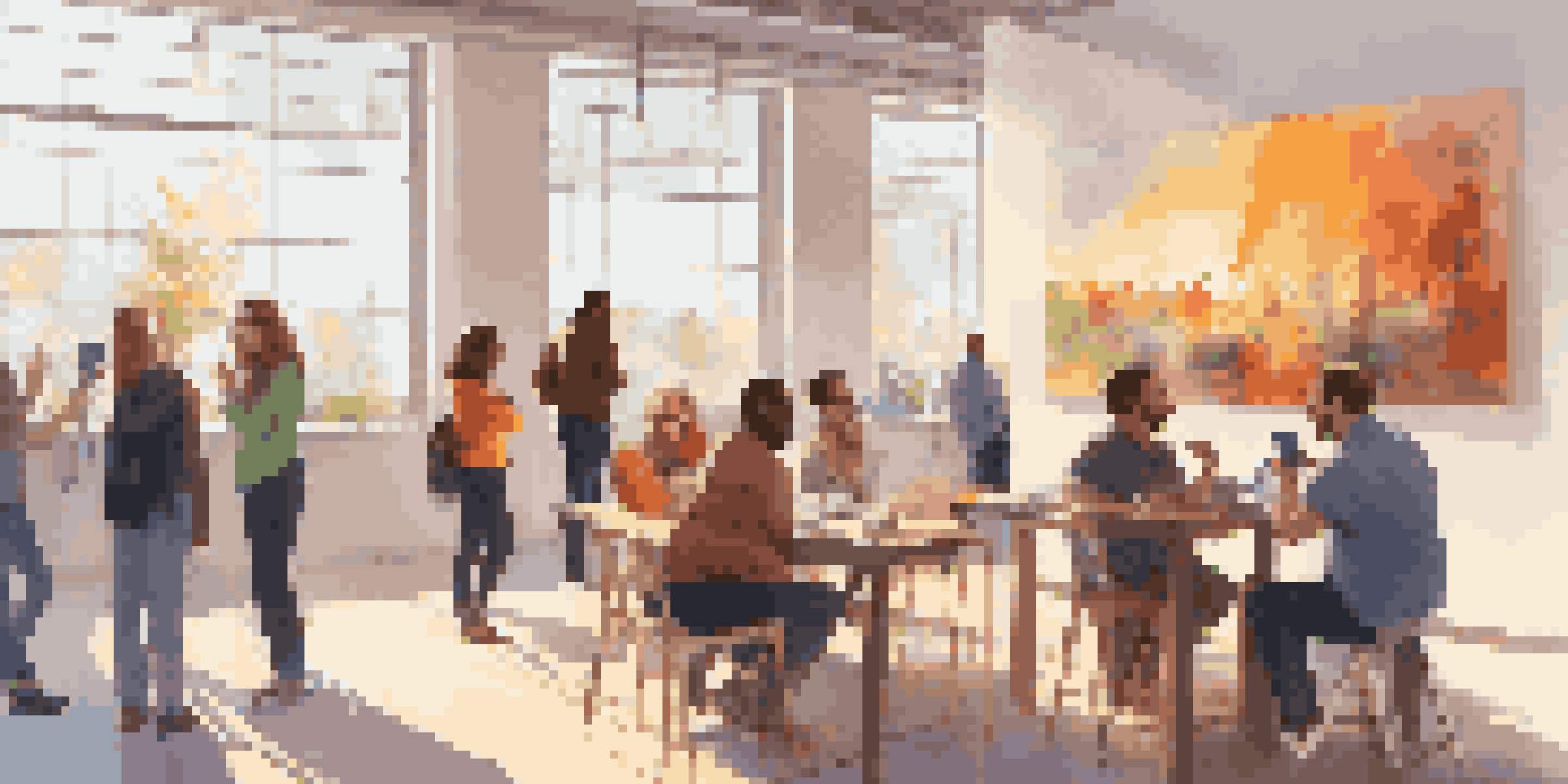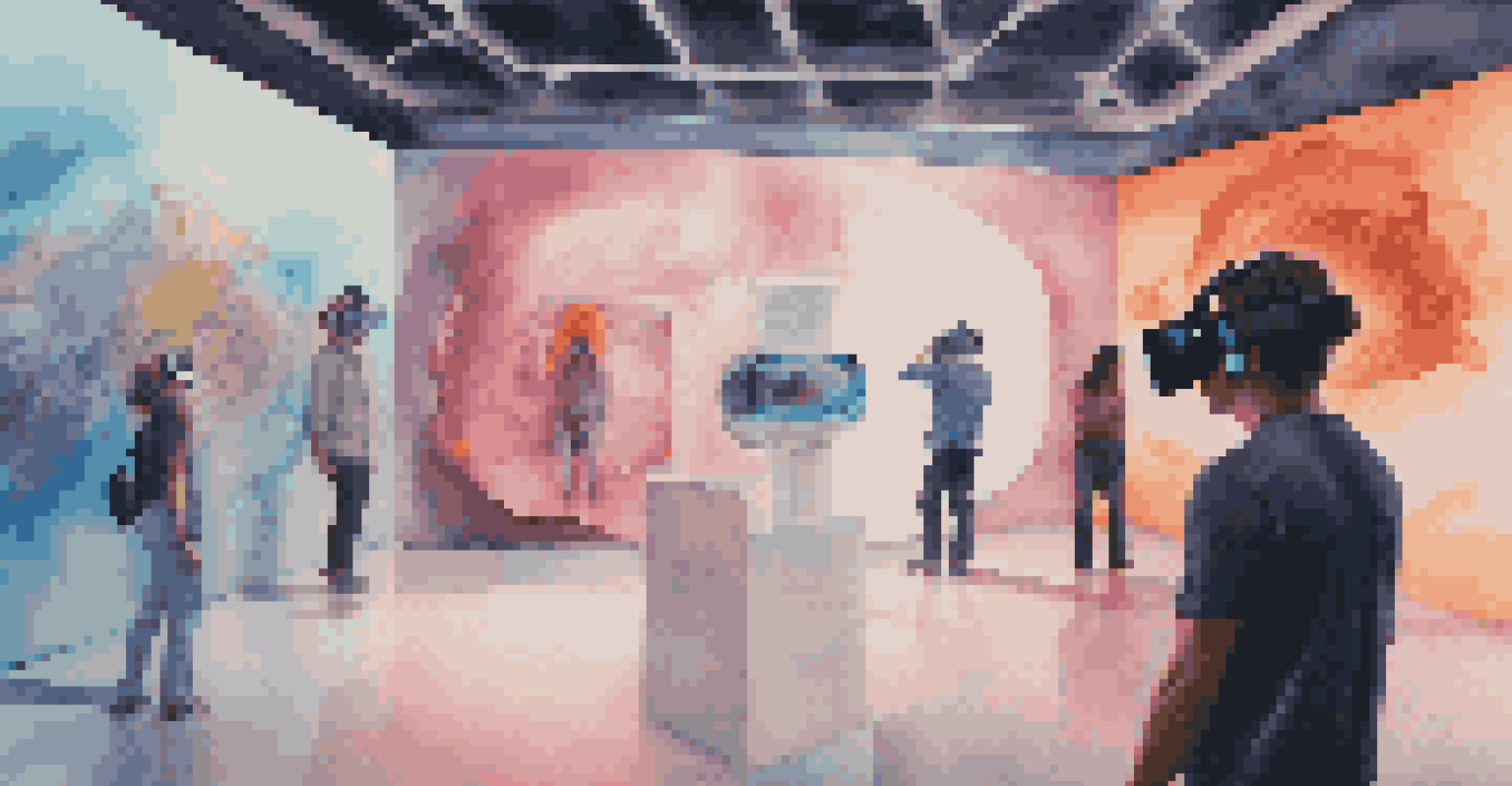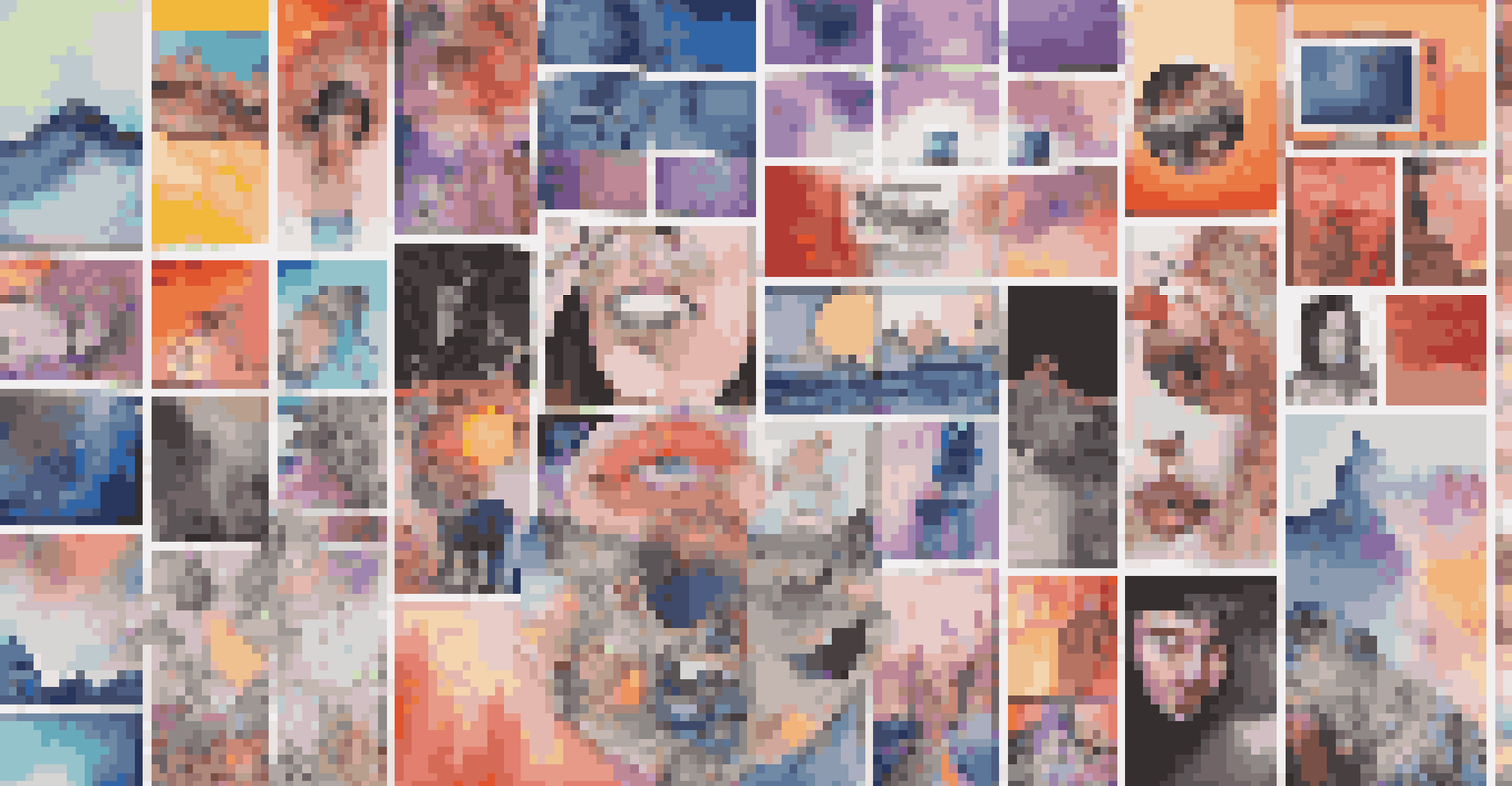Art Critique in the Digital Era: New Platforms, New Voices

The Evolution of Art Critique in the Digital Age
Art critique has come a long way, especially with the rise of digital platforms. Gone are the days when critics were confined to the pages of exclusive magazines. Today, anyone with a smartphone and an internet connection can share their perspectives, democratizing the conversation around art.
Art is not what you see, but what you make others see.
This shift means that emerging voices, often overlooked in traditional settings, can now contribute to the dialogue. Artists and audiences alike benefit from a richer tapestry of opinions and interpretations, leading to a more nuanced understanding of art.
Moreover, the immediacy of social media allows for real-time discussions and feedback. This dynamic interaction can shape the way artists create and viewers perceive their work, making art critique a living, breathing entity.
New Platforms: From Blogs to Social Media
Digital platforms have transformed the landscape of art critique, with blogs, Instagram, and TikTok becoming popular venues for discussion. Each platform has its unique style and audience, catering to diverse tastes and preferences.

For instance, Instagram's visual nature encourages quick, impactful critiques that can reach thousands instantly. This immediacy can engage a wide audience, drawing in those who may not have considered themselves art enthusiasts before.
Digital Platforms Democratize Critique
The rise of digital platforms allows anyone to share their perspectives on art, enriching the critique landscape with diverse voices.
On the other hand, platforms like Medium allow for in-depth analysis and longer-form writing, appealing to those who enjoy a more thoughtful critique. This variety means that there's something for everyone, fostering a more inclusive art community.
Emerging Voices: The Rise of the Everyday Critic
In the past, art critiques were often the domain of established professionals. However, the digital era has ushered in a wave of everyday critics who share their insights and opinions without formal training. This trend is reshaping the way art is discussed and appreciated.
The role of the artist is to ask questions, not to answer them.
These new voices can provide fresh perspectives that resonate with a broader audience. They often bring personal experiences and cultural backgrounds into their critiques, enriching the conversation and making it more relatable.
The rise of the everyday critic also challenges the traditional gatekeeping that has historically surrounded the art world. As more people engage in critique, the conversation becomes more diverse, reflecting a wider range of experiences and viewpoints.
The Impact of Visual Content on Critique
Visual content plays a crucial role in the digital critique landscape. With platforms prioritizing images and videos, critics often use these formats to enhance their commentary. This visual storytelling can make critiques more engaging and accessible.
For example, a video critique on YouTube allows viewers to see the artwork being discussed while hearing the critique, creating a more immersive experience. This combination of audio and visual elements can help clarify complex ideas and evoke emotional responses.
Visual Content Enhances Engagement
Critics leverage visual content like images and videos to make their commentary more engaging and accessible to a wider audience.
Furthermore, the use of visuals can democratize art critique by making it more digestible for those who may find written critiques intimidating. As a result, more individuals are encouraged to engage with and respond to the art, fostering a vibrant community.
Challenges in Digital Art Critique
Despite the many advantages of digital platforms, they also present challenges for art critique. The sheer volume of content can lead to information overload, making it difficult for voices to be heard amidst the noise.
Additionally, the fast-paced nature of social media can sometimes prioritize popularity over substance. Critics may feel pressured to create catchy headlines or sensational content rather than thoughtful analysis, which can dilute the quality of discourse.
Moreover, the anonymity of the internet can lead to harsher criticism and trolling, which may discourage genuine engagement. Finding a balance between open expression and respectful critique is essential for fostering a healthy art community.
Community Building Through Digital Critique
Digital platforms have made it easier than ever for art enthusiasts to connect and build communities. Through hashtags, groups, and forums, people can discuss art, share their work, and offer feedback, creating a sense of belonging.
These online communities often transcend geographical boundaries, allowing individuals from diverse backgrounds to engage with each other. This global perspective enriches the critique process, as different cultural lenses can provide new insights into the same piece of art.
Community Building Strengthens Dialogue
Online communities foster connections among art enthusiasts, promoting collaboration and diverse cultural insights in art critique.
Furthermore, community-building initiatives, such as virtual exhibitions and collaborative critiques, encourage participation and collaboration among artists and critics alike. This interconnectedness strengthens the art world and fosters a supportive environment for creative expression.
The Future of Art Critique in a Digital World
As technology continues to evolve, so too will art critique. Emerging tools like virtual reality (VR) and augmented reality (AR) are set to transform how we experience and evaluate art, offering immersive environments for critique.
These advancements could allow critics and audiences to engage with art in entirely new ways, making the critique process even more interactive. Imagine walking through a virtual gallery while receiving real-time feedback from critics and fellow viewers from around the world.

Ultimately, the future of art critique lies in embracing these innovations while maintaining a commitment to inclusivity and meaningful dialogue. By valuing diverse voices and perspectives, the art community can continue to thrive in this ever-changing digital landscape.